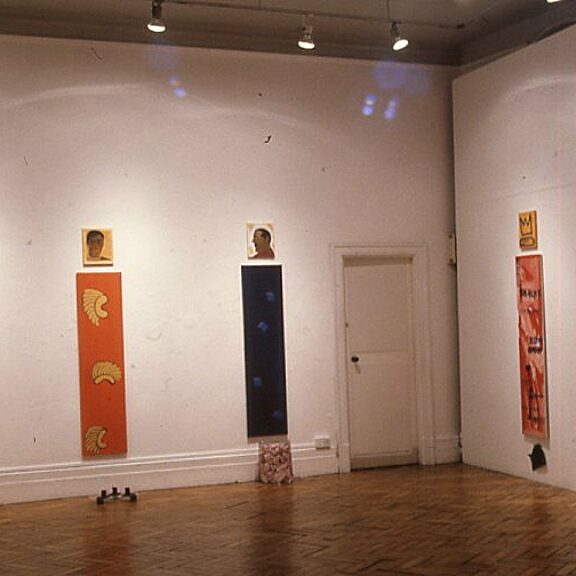Lubaina Himid is a British artist and curator. She studied Theatre Design at Wimbledon College of Art and received her MA in Cultural History from the Royal College of Art. She was a central figure in the British Black Arts movement that emerged in the 1980s, influential in her art, writing and curatorial practice. She won the Turner Prize in 2017.
Himid has exhibited twice at Bluecoat:
seen/unseen was curated by Olu Oguibe and challenged assumptions surrounding the framing of ‘African’ art, through presenting the work of five artists of African origin working in Britain: Uzo Egonu, Lubaina Himid, Olu Oguibe, Folake Shoga and Yinka Shonibare.
Oguibe stated that the artists in the exhibition did not belong ‘in the romantic and imaginary backwoods where the art establishment would rather have them’, instead they belong ‘right in the centre of contemporary cultural discourse and narration.’
Himid exhibited the series African Gardens in the exhibition, describing the work as ‘a letter home’ and adopting a form that can be traced back to her Mirror Cloth Bowl: speaking to Ma Shulan (1986). The installation mirror/cloth/bowl acts as nine painted conversations with the dead, turning ‘the theory of continuous black creativity into a clamour of vibrant and splendid reality.’
2017: Public View
Celebrating the Bluecoat’s 300th Anniversary, Public View was an exhibition by 106 artists who had previously exhibited at Bluecoat. The exhibition highlighted the venue’s curatorial developments, bringing together work in a variety of mediums and styles across the post-war period, into the 21st century. Artists exhibiting included Sonia Boyce, Yinka Shonibare and Yoko Ono. Himid was represented by her 1992 painting, Memorial to Zong, a seminal work that memorialises the 131 enslaved Africans aboard the slave ship ‘The Zong’ who in 1781 were thrown overboard and drowned, so that the merchants could claim insurance money on the ‘lost cargo’. The case came to symbolise the horrors of the ‘middle passage’ of the transatlantic slave trade and strengthened the campaign to abolish slavery.

